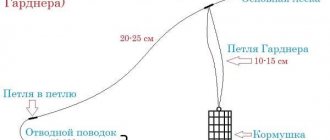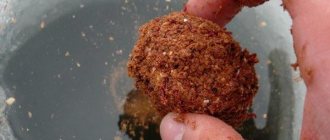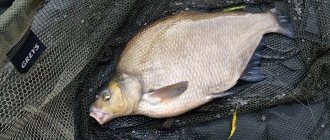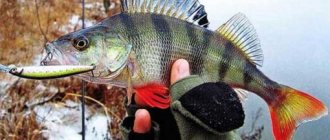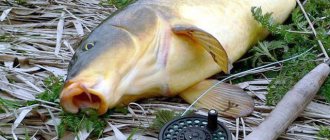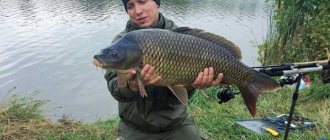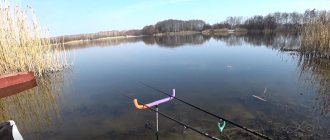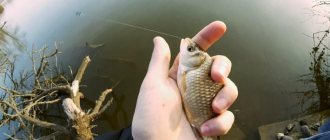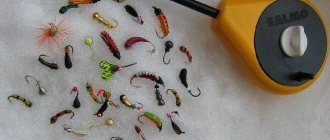Content
- Fishing for carp on a feeder
- Feeder rod for carp fishing
- Fishing line for carp on a feeder
- Hooks for carp
- Feeder feeders for carp fishing
- Bait for carp fishing
- TOP 3 bait recipes for carp
- How to feed bait for carp
- Bait for carp in spring, summer and autumn
- Video: DIY carp feeder
- Expert commentary
This kind of fishing is becoming more and more popular among those who like to catch carp. No, you can go after this fish with more “professional gear”, for example, using a special carp fishing rod. However, not every beginner in this matter is ready to part with hard-earned rubles to purchase such a fishing rod. That is why the feeder wins the love of thousands and millions of carp anglers. Let's look at the nuances of carp fishing with this gear.
Choosing a Rod and Reel
Both amateurs and professionals of feeder fishing can make a common mistake: the wrong choice of power and length of the rod, as well as the reel for their tackle. The result is a complete discrepancy with the fishing conditions in the chosen place and the impossibility of fishing. The principle of “one thing, the best for everything” is not suitable. There are many factors to take into account.
Rod selection
Depends on the body of water where fishing is expected. It is necessary to take into account not only the size of the reservoir, but also the depth and strength of the water flow (if any). Sometimes you need to take into account the type of fish that is found at the place of the upcoming fishing.
There is a division of rods according to structure.
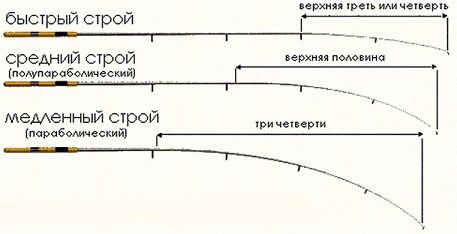
To catch large carp, you need a rod with a slow action, and for small carp, a medium one is suitable.
Powerful rods. Needed for long or medium range fishing where there is a strong current. Usually these are large or medium-sized rivers. The choice is a medium or super-heavy class of long-length feeders.
Medium rods. Needed on bodies of water where there is no current. These include reservoirs and large lakes. Here you need to cast far, so you need to choose a feeder of maximum length. Rods of medium strength, but shorter in length, up to about 3.3 meters, are also suitable for small rivers and canals.
Light rods. Ponds and small lakes are an ideal option for a light feeder of minimal length.
Let's watch a detailed video about carp fishing on a pond, although it's paid, but in general all the features of fishing are reflected in great detail.
Conclusion: there is no one feeder for all life situations. With experience, you should develop a sense of understanding this or that fish habit, and based on this, take advantageous actions in order to ensure the best catch.
Feeder rod for carp fishing
All feeder rods are divided according to three main parameters:
- Length;
- Test;
- Build.
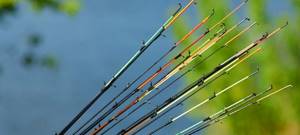
As for the length of the rod for feeder fishing, a value from 2 to 5 meters is most often used. It all depends on the distance over which you need to throw the bait. For example, if you are going for carp in a reservoir or in a large bay, the ideal solution would be a fishing rod of 4 meters or more. If fishing is planned on a river or pond - from 3 meters.
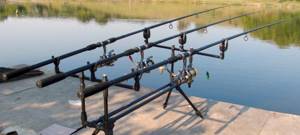
The second point is the test. It is divided into three classes:
- Ultra-light (or as it is also called - “Picker”). This class is from 2.1 to 3 meters in length. According to the test - from 10 to 40 grams. They fish for it mainly on water without a current, or where it is almost invisible. Another small nuance of using such a test when fishing with a feeder is the distance. For example, if you have a picker in your hands, 2.1 meters long, then the ideal casting distance for it will be 20 m, and if its length is 3 meters, then it will be able to throw the bait at 40 meters without any problems.
- Light. This class of rods for feeder fishing is usually from 3 to 3.6 meters long and with a test weight of about 60 grams. It is used in reservoirs with weak currents.
- Medium. The length of such rods is more than 3.6 meters. Test from 80 to 100 grams. It is worth emphasizing that this class of rods is most popular among amateur fishermen.
- Heavy. “Heavy” type of rod, as it is used for fishing with heavy equipment for long-distance casting of bait. The length of such a fishing rod is from 3.5 to 3.9 meters. Test: from 100 to 120 grams.
- Extraheavy. "Super heavyweight" in this classification. Used for the longest casts and where there is a strong current. Length – from 4.20 to 5 meters. Test from 120 grams.
Reel for feeder rod
If we rely on the opinion of experts in this matter, we can conclude that for catching carp while fishing on a feeder, the best option would be a spinning reel with a spool size of 3000-4000 and a rear friction brake.
Also, professional carp anglers advise using a reel with a baitrunner, thanks to which you can instantly release the clutch and prevent the rod or the reel from breaking when biting a trophy specimen.
How to assemble feeder gear for carp
The basis of successful fishing is balanced tackle. It is necessary to select a working kit that will meet the following requirements:
- power;
- reliability;
- sensitivity;
- range.
Despite the increased requirements for strength, you need the most delicate ammunition that does not alarm the fish and allows you to record the slightest contact of the carp with the bait.
Choosing a Rod and Reel
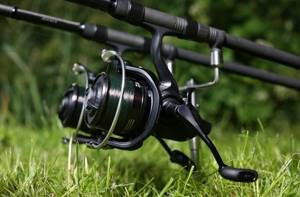
A carp feeder is a powerful rod that allows you to fight strong fish. Depending on the fishing distance, its length can be 2.1–4.5 meters:
- Shorties are needed in close combat when hunting in the coastal zone, near algae, along the first edge.
- Tall “sticks” are relevant at a considerable distance from the shore. They are capable of sending equipment over a distance of 100 meters and above.
- Fishing rods about 3 meters long are universal. They can be used at close, medium and long range. Relevant on many pay zones, small rivers, small quarries and lakes.
The feeder test for carp ranges from 40 to 150 grams. The most delicate “rods” are carp ultralight, used in shallow water, small reservoirs, when hunting small specimens weighing up to 2 kg. The most powerful “sticks” are heavy ones, designed for great depths, strong currents, long distances and catching trophy fish. All-rounders – fishing rods with a capacity of 60–100 grams, suitable for different conditions.
Tip: Good carp reels are produced by such well-known companies as Daiwa and Shimano.
The carp feeder should be equipped with a cool specialized reel. This is an inertia-free model with a size of 5000–8000, a power model with a reduction of about 3.8:1. Line-intensive spool, sensitive friction brake, a baitrunner is required.
Cord diameter
In carp fishing on a feeder, it is customary to use braided fishing lines. Their advantages:
- thinner than monofilament with the same breaking load;
- inextensible, therefore providing increased sensitivity of the gear;
- they fly far;
- more resistant to abrasion.
Braided fishing line for carp fishing is selected with a thickness of 0.17–0.30 mm with a breaking load of 7–20 kg. It is necessary to select a cord of such a diameter that it is not more powerful than the rod. Otherwise, when catching and landing a large specimen, the form may not hold up and will break faster than the thread breaks.
Recommended reading: Catching asp with castmaster
Shape and weight of feeders
The task of this element of equipment is to deliver food to the fishing zone in order to attract fish there and keep it during the fishing process. There are two types:
- open;
- closed.
The first ones are used in stagnant bodies of water - on a pond, lake, quarry, bays and backwaters of large rivers. The second ones are intended for fishing in the current.
The shape of the feeder is:
- cells;
- spirals (springs);
- rockets;
- labyrinths.
The weight of the feeder is adjusted to the depth and strength of the current. In closed reservoirs, light models up to 50 grams are used. When fishing on rivers, their weight can reach 150 grams.
In closed reservoirs, “method” type feeders are often used. This is an open design model that is very effective in shallow water. Allows you to successfully hunt different-sized carp, as well as catch crucian carp, roach, tench and bream.
Leash length and thickness
To make a branch, monofilament, or less often fluorocarbon, fishing line is used. Its diameter is 0.18–0.35 mm, and is adjusted to the potential size of the prey. The length of the fishing line depends on the mood of the fish, fishing conditions and the characteristics of the feeder installation.
For carp fishing, it is advisable to use fishing lines that have sufficient rigidity and abrasion resistance. The color of the thread should blend with the ground. Transparent nylon is a universal choice that is suitable for both sandy and muddy bottoms.
Hook size and shape
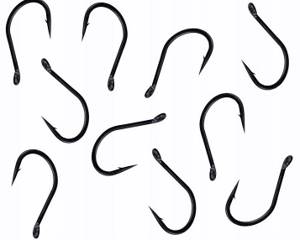
Carp is a large fish that prefers large bait, so you need to use appropriate hooks to catch it. The preferred models are with a short fore-end and a rounded claw-like sting. Durability and sharpness are mandatory requirements for successful fishing.
Feeder equipment for carp depending on fishing conditions
Feeder installation depends on fishing conditions, time of year and the mood of the carp. Each has its own characteristics:
- Paternoster. The most common equipment for a fishing rod. Simple, reliable, and has sufficient sensitivity. Suitable for different conditions, but works better on muddy bottoms.
- Asymmetrical loop. Has increased sensitivity. Used on the current.
- Symmetrical loop. Used in closed reservoirs and sections of rivers with slow flow. The sensitivity of the equipment is average.
- Anti-twist tube. It is considered the installation of a feeder rod for beginner anglers. Sensitivity is weak. Due to the design features, overlap of the leash during casting is eliminated. Suitable for any rivers, can be used on ponds and lakes without a current.
Also, the carp feeder can be equipped with a nipple, a spring, a “method” or “flat” feeder, and a leash can be tied through a wire beam or directly without additional loops and elements.
Recommended reading: How to catch burbot in spring
Fishing line for carp on a feeder
Again, if you rely on the opinion of experts in this matter, then #braid will be the best option. It does not stretch and clearly conveys the most insignificant and cautious carp bites. But you shouldn’t forget about monofilament.
- To cast bait over a distance of 30-35 meters, they most often take a monofilament bait, which has relative stretchability, and this affects the “smoothing” of carp bites.
- To cast bait over a distance of 35 to 40 meters, most often using braided line.
Feeder feeders for carp fishing
In general, the #feeder in feeder fishing is designed to deliver bait to the fishing spot - “to the table”. The second function is to interest the fish and keep them in one area. Literally, a feeder is a container filled with complementary food, which is attached to a fishing line in close proximity to a hook with a nozzle.
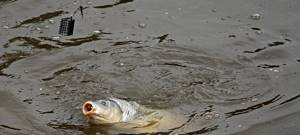
Based on the structure of the feeder feeder, there are three types:
- Open. Suitable where the current is weak. These feeders are filled with loose food, for example, porridge, in which a worm or bloodworm is mixed. The ends of such a feeder are open, which ensures gradual leaching and dissolution of complementary food in the water.
- Semi-closed. Used on reservoirs with medium currents.
- Closed. Suitable where there is a strong current. These feeders have lids on the sides and holes for food to come out. Typically used for animal feed - maggots, worms, motel.
Feeder feeders come in a wide variety of shapes. Among them are several of the most popular:
- "Spiral". The feeder received this name because of its specific spiral shape. Inside such a feeder there is a hollow rod that moves freely along the fishing line with it. This feeder is an excellent choice for long casts. You only need to fill it with viscous mixtures, as the rest will quickly wash out.
- "Cell". This is a feeder with a mesh metal body, made in different shapes - triangle, circle, oval or square. Thanks to this diversity, it can easily be used on different types of reservoirs.
- "Labyrinth". At first glance, this shape of the feeder resembles a sponge that has been twisted with thread. Before throwing it into the pond, this feeder is placed in a container with maggots, which makes its way inside the “labyrinth”. In water, on the contrary, after a certain time the maggot begins to crawl out, thereby attracting carp.
- "Method". It is a lattice or frame onto which complementary foods are pressed. The main purpose of this form is to deliver bait to the fishing point along with complementary food, so that the carp can quickly find and be tempted by it.
Fishing features: spring, summer, autumn
Depending on the carp fishing season, different bait and bait, fishing techniques and locations are used:
- Spring – fishing begins in April, at a water temperature of 10 degrees. During this period, the best fishing is on canals and rivers, where it moves in search of food. For spring fishing, animal bait baits, intensive recasts, and constant supplementary feeding are recommended.
- Summer is a period of activity. Feeds well, bites especially well on cloudy days, during thunderstorms. If the weather is hot, you need to fish early in the morning or in the evening.
- Autumn - caught until about mid-October, tempted by animal food, sensing the approach of winter, rushes to eat. In winter, it is inactive, almost does not feed, using autumn reserves.
Feeder fishing has become quite popular due to the ability to fish in any body of water with different currents. But here you also need to take into account some differences in fishing techniques in still water and in water with a strong current:
- Standing water creates better conditions for fishing, does not wash out the feeding on the bottom, and does not move the feeder. Feeders called “cages” are suitable for stagnant bodies of water, since the food is washed out of it instantly and lures prey. In general, the feeder should not be heavy, but sufficient to cast it to the chosen location.
- Reservoirs with a current require more labor and skill. The rod is selected taking into account the speed of the current and the length of the casts. The further you cast, the longer the rod. The fishing line is better braided so that the current does not carry the equipment too far. The requirements for the test are quite stringent, since massive feeders up to 120 grams are used. The bait must have viscosity in order to stay in the feeder.
Bait for carp fishing
Before you start fishing on the feeder, you need to take care of pre-baiting the “table”. As you know, this is necessary in order to attract carp, but not to saturate it, but to interest it and push it to grab the bait.
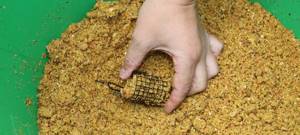
As you know, the carp family is large omnivorous representatives that absorb food a lot and quickly. Therefore, you will have to take a lot of complementary food with you when fishing, from 2 to 5 kg. What is the best way to catch carp, you ask?
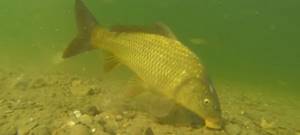
Bait for Carp | Carp's Favorite Flavors
The most important part of fishing is choosing the right bait. A large number of bait mixtures are sold in fishing stores. But not all of them are so good.
A good Bait for Carp should consist of a Small, Medium and Large fraction. If desired, you can add Boyles. This will also increase the catchability of the bait.
In Cold Water, Carp Prefers Aromas Such as:
Pepper;
Garlic;
Worm.
In Warm Water, Carp Likes Aromas More:
Strawberries;
Plums;
Honey;
And Other Sweet Smells.
At the beginning of fishing, a pre-selected point must be generously fed. There is no need to skimp on the bait, as a large volume of the bait mixture will help keep the fish at the fishing point for a long time.
You can feed either with your hands or with a slingshot. If during Fishing you feel a decline in Fish Biting, you should feed your fishing point. The bait also needs to be filled into the feeders.
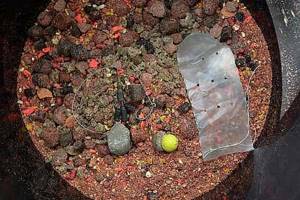
3 ways to improve your fish bite!
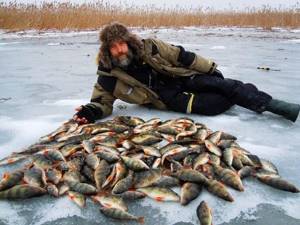
Over 15 years of active fishing, I have found many ways to improve the bite, and here are the most effective:
1. Bite activator . This pheromone additive attracts fish most strongly in cold and warm water. The Fish Hungry bite activator has proven itself to be excellent - Read more…
2. Tackle with increased sensitivity . You should first familiarize yourself with the features of using a particular type.
3. Pheromone baits . They attract the attention of fish, stimulate hunger and cause a schooling reflex, which allows you to collect a lot of fish in one place.
You can get the rest of the secrets of successful fishing for free by reading my other materials on the site.
3 ways to improve your fish bite!
Over 15 years of active fishing, I have found many ways to improve the bite, and here are the most effective:
1. Bite activator . This pheromone additive attracts fish most strongly in cold and warm water. The Fish Hungry bite activator has proven itself to be excellent - Read more…
2. Tackle with increased sensitivity . You should first familiarize yourself with the features of using a particular type.
3. Pheromone baits . They attract the attention of fish, stimulate hunger and cause a schooling reflex, which allows you to collect a lot of fish in one place.
You can get the rest of the secrets of successful fishing for free by reading my other materials on the site.
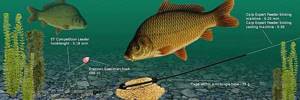
Branded Groundbait at Home. Issue 41 | Video
TOP 3 bait recipes for carp
Catching carp without using special bait that will attract this fastidious fish is very difficult. The fact is that #carp loves secluded places: flooded trees, reeds, deep water. Sometimes it’s not so easy to lure him out of there. Therefore, bait for carp is an excellent assistant in this matter.
We bring to your attention three proven recipes that occupy top places in carp fishing.
Biscuits for carp.
What do you need:
- Oatmeal cookies;
- Baked Milk Cookies;
- Roasted peanuts (chopped);
- Corn flour;
- Corn or oat flakes.
Take cookies and cereal and grind them in a coffee grinder. Mix all the ingredients and place them in bags. When fishing, we add animal ingredients and, of course, aromatic additives for every taste.
Chocolate and honey.
What do you need:
- Finely ground corn flour;
- Wheat flour (necessarily of the highest grade);
- Dark chocolate bar;
- Honey;
- Salt.
We take each type of flour separately from each other and fry it in a frying pan. Then mix and add salt. Using a double boiler, melt the chocolate. After it melts, add a glass of hot water and honey. Don’t forget to stir the resulting mixture. Once it cools down, form balls by rolling them in flour.
Cat and dog food.
What do you need:
- Powdered milk;
- Semolina;
- Sugar;
- Cat or dog granulated food;
- Roasted peanuts (ground);
- Breadcrumbs;
- Corn grits;
- Cake;
- Oat, corn or millet flakes.
Mix all the ingredients thoroughly and leave it all for 10-15 minutes so that the resulting mass is saturated with aroma. When you arrive at the fishing pond, add some water and again let the resulting mixture sit for 10 minutes.
How to feed bait for carp
Fishing for carp on a feeder involves several options for performing this task, which depend on the distance:
- Is the distance from the shore short? Throw 5-6 balls by hand;
- Is the distance long? We take out the slingshot. Yes, yes, exactly the slingshot! Fans of feeder fishing also have such a tool. It is suitable for throwing bait at a distance of about 50-60 meters from the shore.
If you don’t have a slingshot, you can use the so-called “rocket”. This is a special feeder that does not sink. After being thrown into the water, it floats up with the top up, and the food loaded inside is poured out exactly to the designated place.
How to equip a feeder rod with a reel and equipment
Coil
To equip the feeder, specially produced reels are used, but if one is not found, a regular spinning reel will do. Below are the recommended parameters that your reel should have:
Reels are divided into high-speed and power types, according to gear ratios. We need something in between. A reel with a gear ratio up to 4.6 is a power reel, and a reel with a gear ratio above 5.5 is a high-speed one. Reels with gear ratios ranging from 4.6 to 5.5 are just right for us.
Let's move on to the bobbin. Usually the universal size is 3000. For us, from 2500 to 4000 is suitable. By the way, when choosing a reel, inquire about the presence of a spare spool in the kit; if it is not there, ask which models are on sale separately and buy it, believe me, it will come in handy.
When fishing with a feeder, the probability of a sharp jerk is very high, and, accordingly, the line will break. We don’t need this, so we make sure that our reel is equipped with a friction brake. The clutches are front and rear. The rear clutch is less sensitive and is easier to use in feeder fishing, while the front clutch is more often installed on spinning reels. There is not much difference - who is more comfortable working with what.
The reels use ball bearings, some models can have up to fifteen of them. There is no need to chase quantity - those with 5-6 bearings are quite suitable for us, but no less, because the device has at least 5 elements that are very susceptible to abrasion.
We can recommend the following models:
- Shimano BAITRUNNER 4000 D up to 5000 rub.
- Okuma LONGBOW BAITFEEDER 50 to 2000 rub.
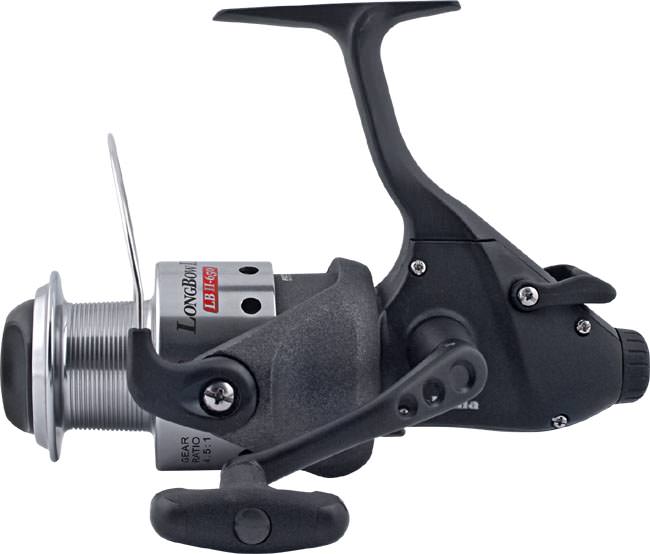
Okuma LONGBOW BAITFEEDER 50 with baitrunner - budget quality reel
Let's move on to the issue of choosing fishing line
The debate about which is better - monofilament or braided line - still continues. Let's look at the advantages and disadvantages:
- Braid has an advantage that there is no point in arguing with: it is very sensitive, tapping the bottom to determine the location of future fishing, transmitting a bite - in this it is better. But since very often fishing occurs in places where shells accumulate, on the edges, the likelihood that the line will be “cut” increases greatly. And just the braid has a much greater chance of being cut off. But good fishing lines have abrasion protection, for example, Salmo Elite Braid 0.13, we recommend.
- Monoline - It may not be as sensitive, but it is less susceptible to the chance of being cut off by barnacles or anything else. Plus, stretching plays an important role if you catch large and strong fish. Good fishing lines are produced by Salmo; they have a Feeder line.
If you haven’t decided on your own which fishing line to choose, take monofilament if you don’t catch crucian carp. Braid is still better for him because of his very weak touch to the bait. Choose a monofilament line with the lowest stretch and preferably a dark color (this is used by carp fishermen for good reason, it is not visible at the bottom).
For leashes, use high-quality fluorocarbon fishing line that is invisible in the water.
Equipment is the heart of the feeder
The simplest equipment with which to start studying a feeder is a paternoster. It consists of a loop into which the feeder is threaded and a leash on which the hook is attached.
The equipment is made as follows:
- We take the main fishing line and tie a loop for the leash at the tip.
- Next, place your palm along the length of the first loop and knit a second loop at the end of the palm. The size of the second loop should be such that the feeder fits into it.
- We attach the feeder - we pull a large loop through the swivel and throw it on the feeder itself. We fix the line on the swivel itself. Using the “loop-to-loop” knitting method, we attach a leash with a hook to the second small loop.
- "Paternoster" is ready.
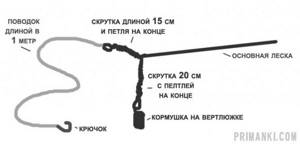
Video for clarity:
Now let's talk about feeder rigs for catching bream in the current, carp and crucian carp.
Bait for carp in spring, summer and autumn
Like most other fish, carp changes its taste preferences depending on the time of year, so the bait on the feeder tackle is divided into several groups.
- Spring. In early spring, experts advise using bait of animal origin on the pond, as they represent a natural form of food for carp at this time. When catching carp in the spring on a feeder, you can also use worms, bloodworms or maggots.
- Summer. It is best to catch carp during the day when there is low atmospheric pressure during rain. Here the right choice would be bait of plant origin. Many carp anglers claim that sweet canned or boiled corn is the most ideal option for this time of year. Catching carp with corn increases your chances of coming home with a trophy. You can also safely use special flavored balls, or boilies, as they are also called.
- Autumn. At this time of year, biting activity decreases. In September you can still “jump on the last car”, but in October and November it is very difficult to catch carp. The fact is that the lower the temperature, the deeper the carp goes. Therefore, if you go fishing in the fall, it will be difficult to find carp in shallow water. It is better to focus your attention on deep holes and pools.
Groundbait and bait
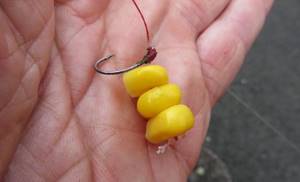
Carp are omnivores, but their food preferences vary at different times of the year. This depends on the availability and accessibility of a certain type of food in the reservoir. Plant and animal baits are not exotic and are similar to standard bait options for catching most of our local peaceful fish. The method itself, which allows you to catch carp on a feeder, is based on the use of bait for fishing, which attracts fish to the fishing site. We will discuss effective baits, bait mixtures and their compositions in more detail, focusing on the nuances of the use and preparation of these main components of fishing.
Groundbait recipe
Groundbait is prepared on a base of fish feed, adding binding plastic elements in the form of unstrained pearl barley or millet porridge. Auxiliary ingredients are added to the mixed composition in the form of crushed sweet canned corn, boiled crushed potatoes, powdered milk and breadcrumbs, which create a muddy effect for the bait. As attractants, molasses, vanilla, and sweet strawberry or banana jams are added to mixed drinks. In some reservoirs, carp are attracted to the smell of garlic. Before placing food in the feeders, it is possible to add animal ingredients in the form of small bloodworms, maggots and chopped worms. Soil is not added to the feed; pure feed is provided. They try not to over-wet the bait.
Important! The mixture should pour out of the feeder freely and relatively quickly, creating a dense feeding spot.
Expert commentary
Alexey Gerasimov (Vodyannoy), has been fishing for carp for more than 9 years, the record is a carp of 12.55 kilograms:
— For novice carp hunters, I have some advice. If you have time, try to find a place where carp accumulate in a pond in advance, before fishing. This will be a good help, since you won’t have to frantically run around early in the morning and find out where the treasured fish is. Remember - carp are very greedy for salty things! Therefore, you can over-salt the bait a little, it won’t make it worse. Simply put - 1 tablespoon per 2-3 liters of dry mixture. However, not only salt, but also pepper can lure this fish. Two tablespoons for three liters of dry mixture will undoubtedly attract carp. Well, you need to remember the most important thing - the rule: if you want to catch trophies, then release the fish you catch! Maybe not all of them, but remember - the larger the carp, the less interesting it is in the gastronomic sense, but it is very interesting as an object of fishing. So let go, gentlemen, let go!
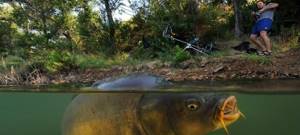
Dear fans of #feeder carp fishing, we hope that all the techniques, facts, secrets and tips described above will help you catch the long-awaited trophy with a fishing rod. As always, if you have any additions, tips or personal experience, share it in the comments, perhaps it will be useful for beginning carp fishermen.
